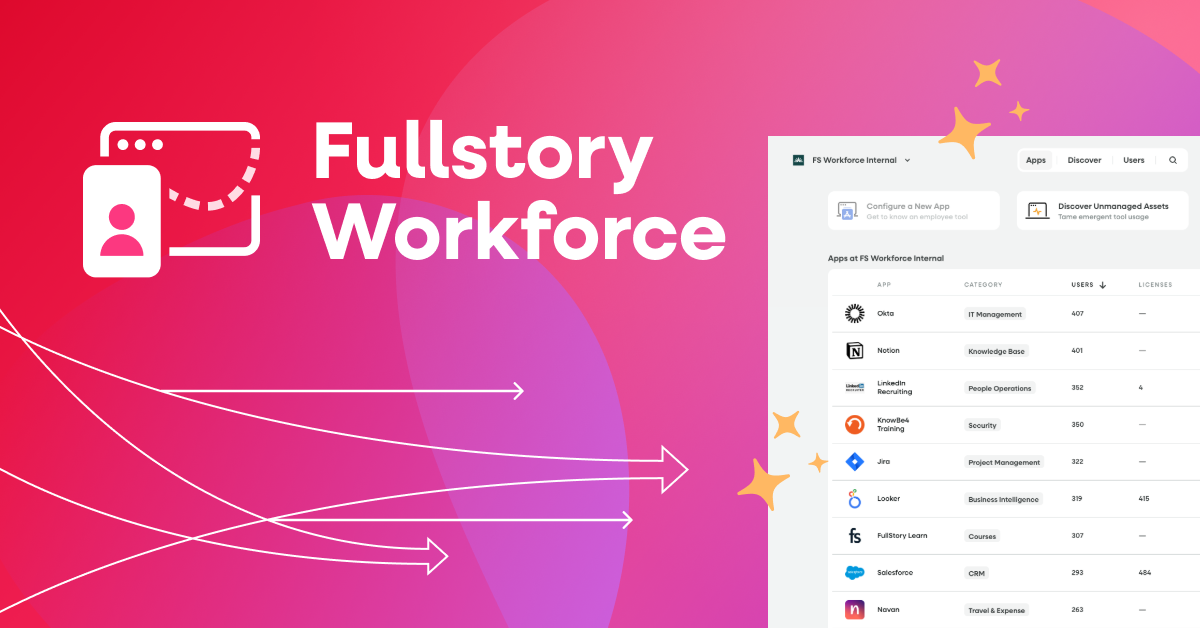As predicted, this year’s Cyber Monday saw record-breaking sales as inflation cools and consumer confidence rises.
It seems clear that online retailers are doing something right… right?
Unfortunately for ecommerce brands, success isn’t quite so simple. Despite strong sales overall, retailers have to consider how often shortcomings in their digital experience sent would-be customers straight to a competitor’s site. (Spoiler: it’s probably more often than anyone would like to think.)
Long story short: Frustration is up
The big picture
Compared to 2022, online shopper frustration increased by nearly 25% on this year’s Cyber Monday. Zooming out to the entire Cyber Five—the five days Thanksgiving to Cyber Monday, also known as C5—digital frustration had risen over 16% from the previous year.
Rage clicks, the ultimate frustration signal
Can you remember a time you smashed your finger on your trackpad or screen repeatedly? Chances are you weren’t doing it because you were happy. Rage clicks are an excellent indication of user frustration because they almost always signify that something isn’t working as it should be. And if that thing is an important button (like “Add to cart” or “Confirm order”), a retailer could have a big problem on their hands.
Of course, the checkout page is the last place a retailer wants to spot rage clicks—right when a shopper is ready to complete their transaction. Unfortunately for ecommerce sites, the many network calls and other processes that make up the checkout page make it a breeding ground for digital experience issues.
Monitoring the signals on the checkout page is mission critical for retailers, especially in this busy time of year. It was reported that one large retailer couldn’t handle the huge spike in traffic C5 brought to their servers, leaving their pages unresponsive. This led to a sharp uptick in rage clicks and, subsequently, customers leaving their site.
Here are a few of the most common triggers for rage clicks:
Intrusive overlays
Broken buttons
Slow load times
Text or images that look linked but aren’t
Other important frustration signals were up, too
In addition to rage clicks, there are two other important signs of frustration we kept an eye out for during the heavy shopping period.
Error messages—a click that triggers a client-side JavaScript error—were up 1.7% over last year on Cyber Monday itself. For the full C5 period, error clicks were up nearly 4%.
Additionally, dead clicks—clicks where nothing happens when a shopper clicks or taps on a site—rose by just under 2% compared to Cyber Monday 2022. When looking at the full C5, dead clicks increased by 2.6% year over year.
Why frustration matters
In a world where every online retailer’s competitor is only a tab away, businesses can’t afford even an ounce of friction in their digital experience.
Fullstory’s research shows that nearly two-thirds (64%) of global consumers will abandon a site without completing their transaction if they encounter a problem or frustration. Making matters even graver, over half (53%) of shoppers say they are unlikely to return to a business where they’ve previously had a poor experience.
And yet, less than one in five (19%) of brands say they have a clear understanding of where and why customers get frustrated when using their site, and only about a third (35%) monitor frustration signals.
Combatting shopper frustration
There are so many ways for shoppers to become frustrated while using your website—and there’s no way to predict every potential pitfall.
However, retailers that proactively monitor frustration signals and user behavior with digital analytics are significantly more likely to provide a shopping experience that retains customers.
Fullstory helps our customers identify and combat shopper frustration with the industry’s most robust suite of capabilities, like:
Conversion analyses that use Machine Learning to help you diagnose friction points in your checkout flow.
Metric alertsthat notify you about shifts in metrics that matter to your business, enabling you to stop issues before they spread.
Session replay to gather context on user issues and see exactly what your customers experience on your site.
Dashboards for big-picture insights and to consistently monitor the health of key pages, segments, overall site performance, and more.
Journey mapping to help you spot behavioral trends faster, pinpoint friction, and see the paths users take before and after triggering a frustration signal.
Retention analysis to determine what’s causing users to abandon your site.
Take Mammut for example—a global outdoor recreation retailer and Fullstory customer. In addition to using Fullstory’s out-of-the-box frustration signals to identify and fix friction points, Mammut discovered that fewer shoppers than expected were using the site’s menu feature, but those shoppers who did were more likely to complete their purchase. After investigating in Fullstory, Mammut found that the existing design and location of the menu was confusing to site visitors, leading to dropoff. The updated design they launched with this information led to an 8% increase in conversions from mobile customers.
For more on the causes and remedies of digital friction, read our complete guide to online frustration here.





